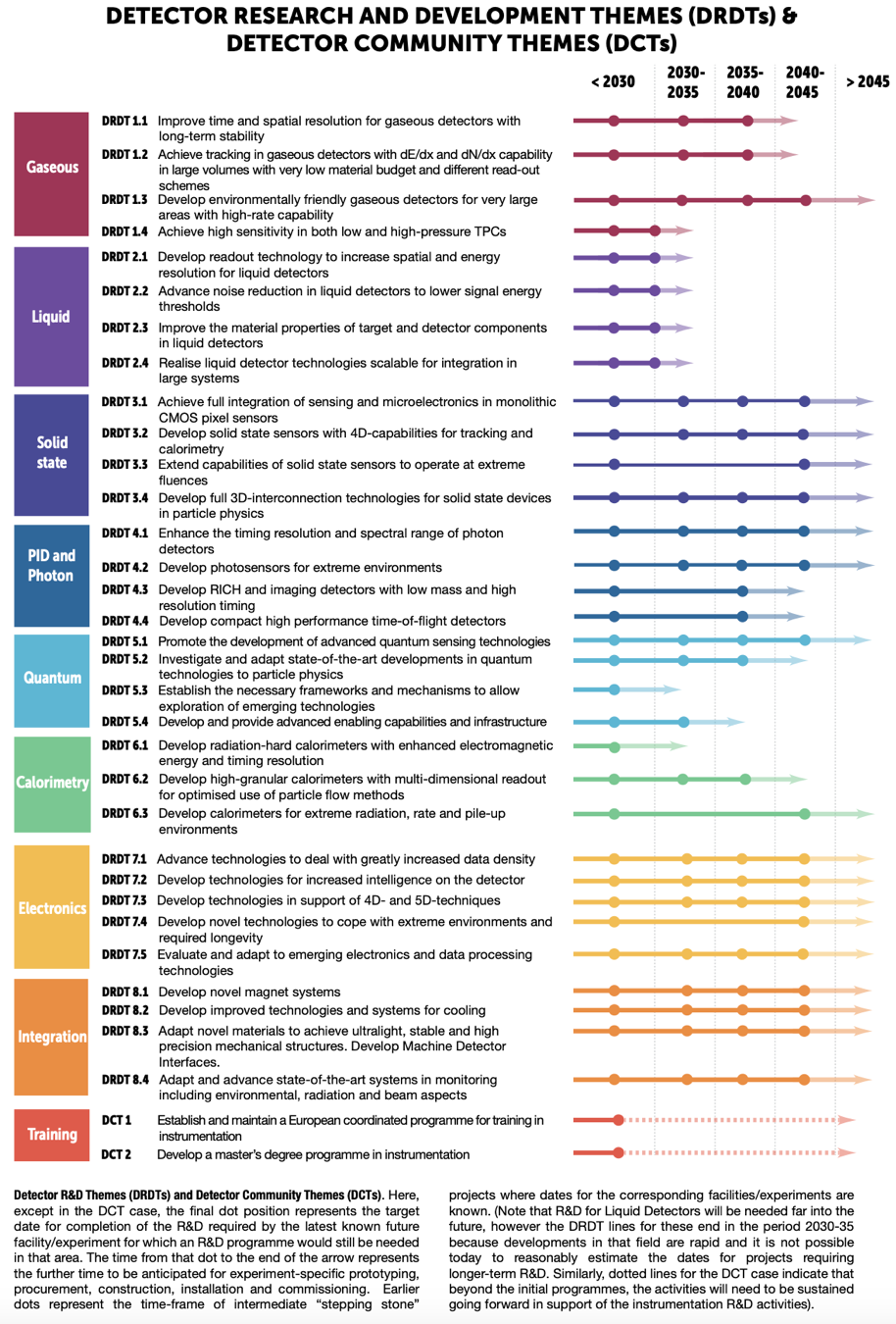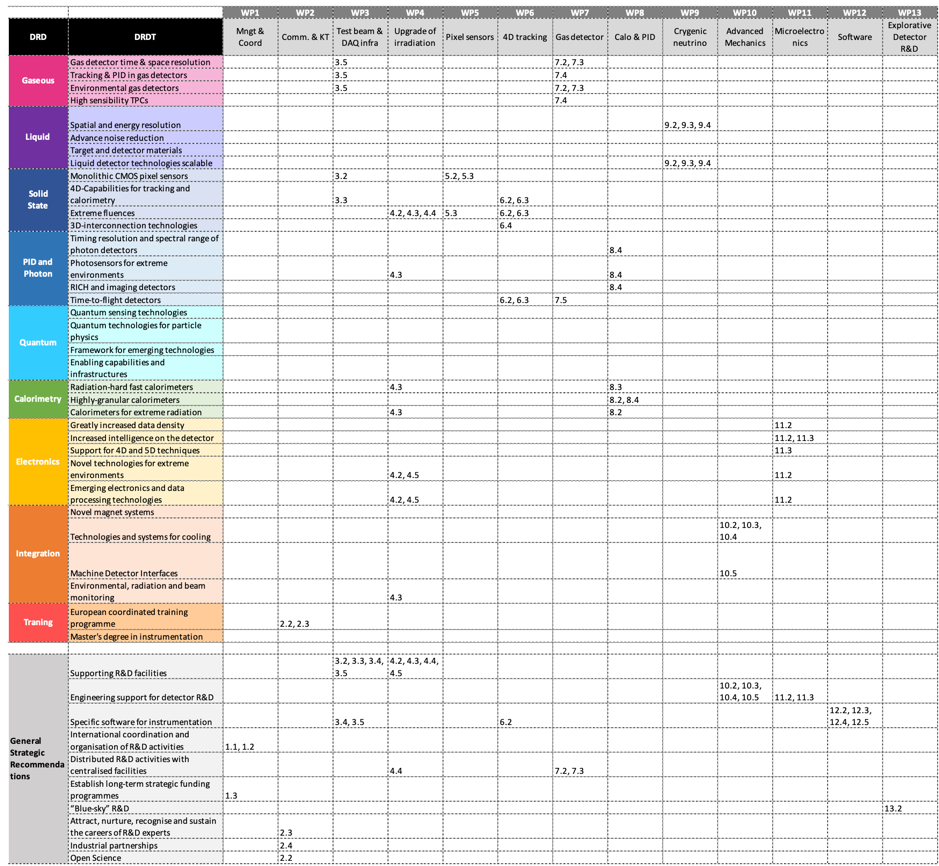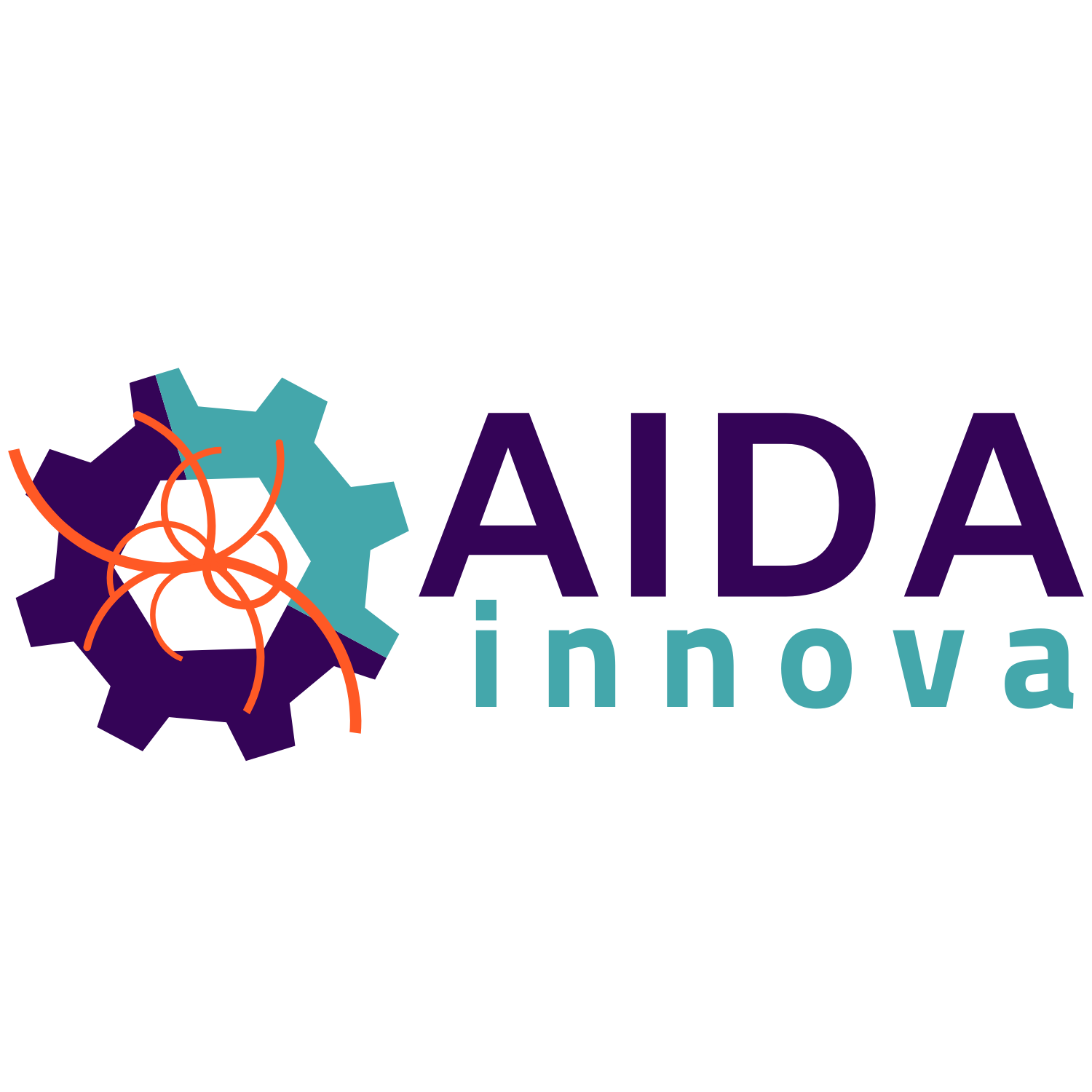This article is a edited version of AIDAinnova's deliverable D1.1 available here.
By Felix Sefkow (DESY).
The European Strategy for Particle Physics stressed the importance of a strong focus on instrumentation, and the 2020 Update mandated the European Committee for Future Accelerators (ECFA) to develop a roadmap for detector R&D with the goal to maximise the performance of the European near and long-term particle physics programme.
Under the oversight of ECFA, the process towards a roadmap was organised by the ECFA Roadmap Panel, composed of a coordination group and 9 Task Forces, 6 addressing technology areas (gaseous, liquid and solid detectors, photo-detector and particle ID, and calorimeters) and 3 addressing cross-cutting topics (electronics, integration, and training), very similar to the AIDAinnova Work Package (WP) structure. The AIDAinnova Scientific Coordinator (Felix Sefkow at the time) was a member of the coordination group, and further members of the Management Team and Steering Committee were represented in the Roadmap Panel.
In addition, overarching needs of the instrumentation field were discussed with the full task force membership and formulated in terms of General Strategic Requirements. Together with the Technology and cross-cutting chapters, the outcome has been summarised in a 248-page document [1] and also in an 8-page summary [1] for less specialised audiences.
General strategic recommendations (GSR) capture the needs with central importance for detector R&D, which have also guided the composition of the AIDAinnova work programme, for example supporting R&D facilities (GSR 1) such as test beams and irradiation facilities, engineering support (GSR 2), specific software for instrumentation (GSR 3). They also stress the importance of international coordination (GSR 4), long-term strategic funding programmes (GSR 5) and industrial partnerships (GSR 9) and high-light the role of “blue-sky” R&D (GSR 7).

Figure 1: ECFA Roadmap Detector R&D themes and relation to future particle physics projects.
The considerations and the expertise that went into the creation of the ECFA detector roadmap have to a large extent also entered into the proposal preparation process for AIDAinnova about 1.5 years earlier. It is thus expected that the AIDAinnova WPs and Tasks address the major challenges of the field as expressed in the DRDTs and GSRs. The table in Figure 2 demonstrates that this is actually the case. Almost all DRDTs and all GSRs are addressed by the AIDAinnova WPs.
The only exceptions are liquid detectors for non-accelerator experiments and academic curricula, both not in the AIDAinnova scope. Therefore, AIDAinnova does not have a corresponding WP, but WP13 includes a blue-sky type activity on nano-composite materials.

Figure 2: Correspondence between the AIDA Work Packages and Tasks with the ECFA Roadmap Detector R&D Themes and General Strategic Recommendations.
It should be stressed that the facility-oriented WP 3 (Testbeams) and WP 4 (Irradiation and Test) as well as the software activity WP12 benefit almost all DRDTs, but for clarity we have displayed here only the most direct connections and highlight their role in addressing the GSRs.
The Roadmap was approved by ECFA in November 2021 and presented to CERN Council in December. Council took note and asked the Roadmap coordination group to proceed towards an implementation plan. Following discussions with community representatives (RECFA) as well as Funding agencies, the plan was worked out and approved by Council in its September 2022 session.
The implementation rests on two pillars: the establishment of Detector R&D (DRD) Collaborations along the DRDTs, anchored at CERN, and dedicated measures for the implementation of the GSRs. In the first half of 2023, proposals addressing the DRDTs of the Roadmap shall be prepared, where the Roadmap Task Force Leadership takes a guiding role in a bottom-up process, building on existing collaborative structures where existing. In parallel a light-weight reviewing process is being set up, overseen by both ECFA and CERN. With approval of successful proposals in fall 2023 the new scheme should be in place in 2024. Commitments of National Funding Agencies will be sought in an MoU signature process throughout 2024. For this to be realistic, consultations with funding bodies need to take place already in the proposal preparation phase, with mechanisms depending on the country-specific situation.
Conclusion
The high-energy particle physics community is well advanced and capable of uniting behind visons for large and long-term future projects. The increasing time scales, complexities and technological challenges of future experiments demand a high degree of coherence and strategic resource allocation also in the field of detectors. EC-funded integrating activities have contributed significantly through the EUDET, AIDA, AIDA-2020 and now AIDAinnova projects to foster and consolidate this on a European level. This evolution has been instrumental in the preparation of the ECFA Roadmap for Detector R&D with a vison spanning over as much as the next 20-30 years.
Coherence and strategic vision are particularly important in strengthening the co-operation and co-innovation with industrial partners. Intensified cooperation with industry will both help maintaining the leading role of European particle physics and enhance the competitiveness of European high-tech industries. EC-funded programs are expected to continue to play a catalysing role in this integrating endeavour.
References
[1] The 2021 ECFA detector research and development roadmap - ECFA Detector R&D Roadmap Process Group - CERN-ESU-017, https://cds.cern.ch/record/2784893/
